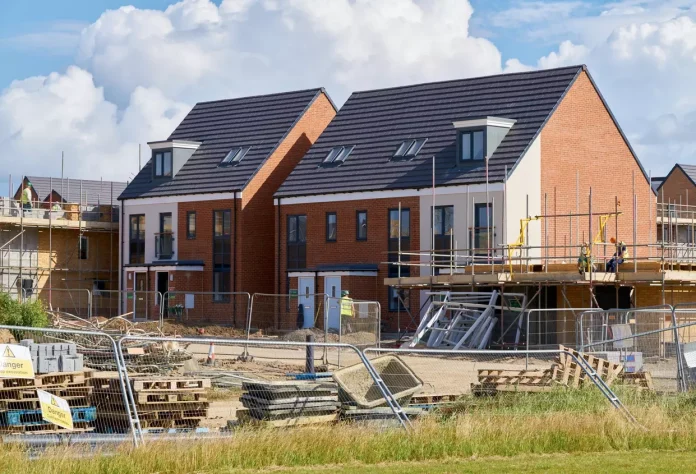The latest research by Unlatch, the new homes sales progression and aftercare platform for developers and housebuilders, has revealed which local authorities have seen the highest level of house building when it comes to residential development as a percentage of total space available.
Unlatch analysed each area of England based on the total land area in hectares and what percentage of this land area has been attributed to developed use for residential properties.
The research shows that the nation’s grand total land area is estimated to cover almost 13.3m hectares. Just 152,380 hectares of this land is also estimated to have been utilised for developed residential use, equating to just 1.1% of total land area.
In the majority of regions this land usage for residential development remains fairly consistent with the national average, with the South West home to the lowest level at 0.7%. Outside of London, the North West and South East are home to the highest levels at 1.4%, but in the capital itself, this climbs to 10.1%.
No surprise then, that the capital’s boroughs account for the most built up property markets in the nation. In Kensington and Chelsea, 22.3% of the borough’s total land area has been utilised for residential development.
Islington isn’t far behind, where a fifth of the borough has been developed for residential homes, with Lambeth (18.2%), Hackney (17.6%) and Hammersmith and Fulham (17.4%) also ranking amongst the highest.
Outside of London, Luton is the most developed local authority with respect to residential properties, accounting for 10.1% of total land area, followed by Leicester (10%), Blackpool (9.8%), Watford (9.8%) and Worthing (9.6%).
The least developed area? Eden, where land developed for residential use sits at just 268 hectares, 0.1% of the area’s total land area.
At 0.2%, Ryedale, Richmondshire, Craven, West Devon and Northumberland are also some of the least developed areas where residential property is concerned.
Lee Martin, Head of UK for Unlatch says:
“There seems to be a common misconception amongst the public that the nation is bursting at the seams when it comes to the number of homes already built and that we simply have no available land left to address the current housing crisis.
This simply isn’t the case and, in fact, land utilised for residential development currently accounts for just over one per cent of the nation’s total land area.
Of course, in major urban areas, this percentage is far higher, particularly in London, where the demand for housing is greater due to a larger population.
However, in some areas, residential development accounts for a tiny fraction of total land available and it’s ironically in these areas where current homeowners are often most passionately against the construction of new homes.”
Data tables
Data tables and sources can be viewed online, here.
About Unlatch
Unlatch is helping developers create a more sustainable and accelerated sales approach through their unique PropTech software. Saving their clients hours in laborious tasks on a weekly basis, adding value to their sales teams, and bringing down the average exchange timescale to 25 days from point of reservation rather than when legal packs are received when using the Unlatch platform.
Sales teams (both internal and external) are able to concentrate not only on their sales and progression, but also giving the customer a far better journey and experience through their purchaser portal white labelled APP. Our housebuilder and developer clients have seen the benefits every day, whilst using the data and analysis tools to save even more time for their marketing departments and for reporting.

| [donate]
| Help keep news FREE for our readersSupporting your local community newspaper/online news outlet is crucial now more than ever. If you believe in independent journalism,then consider making a valuable contribution by making a one-time or monthly donation. We operate in rural areas where providing unbiased news can be challenging. |



















